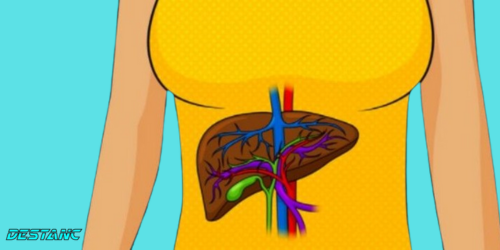10 Warning Signs of Liver Damage You Shouldn’t Ignore
The liver, an important organ responsible for various vital functions of the body, is affected by various factors. Recognizing the warning signs of liver damage is very important to detect liver disease at an early stage and prevent further liver damage. In this article, we’ll explore ten key warning signs that shouldn’t be ignored and highlight the importance of monitoring and addressing potential liver problems.
Part 1: Understanding the Liver and its Functions

Overview of liver function
Here’s an overview of the liver’s role in metabolism, detoxification, and nutrient storage.
The importance of maintaining optimal liver health is emphasized.
Part 2: 10 Warning Signs of Liver Damage

- Jaundice:
Yellowing of the skin and eyes (jaundice) explains liver dysfunction.
Bilirubin accumulation and effects on skin and eye color are discussed.
- Abdominal pain and swelling:
The relationship between persistent abdominal pain and liver damage is discussed.
It is explained that the accumulation of fluid can lead to the formation of tumors in the abdominal cavity.
- Dark urine:
It explains that dark urine can indicate problems with liver function.
The role of bilirubin in urine discoloration is discussed.
- Fatigue for no reason:
Investigate whether chronic fatigue can be a symptom of liver problems.
The effect of liver dysfunction on energy levels is discussed.
- Light-colored stools:
Explain that pale or light-colored stools may indicate a bile duct obstruction.
Discuss the connection between stool color and liver health.
- Persistent itching:
In particular, it is explained that frequent itching of the skin can be associated with liver dysfunction.
Discuss the role of bile salts in pruritus.
- Nausea and vomiting:
Frequent nausea and vomiting may indicate liver problems.
Explain the relationship between liver dysfunction and digestive disorders.
- Loss of appetite:
Investigating how sudden loss of appetite can affect liver dysfunction.
The effects of liver dysfunction on digestion and nutrient absorption are discussed.
- Easy Bruising and Bleeding:
Explains how easy bruising and prolonged bleeding can be associated with liver damage.
Discuss the role of the liver in the synthesis of coagulation factors.
- Changes in mental activity:
Cognitive changes such as confusion and difficulty concentrating are considered signs of advanced liver damage.
Explain the relationship between liver and brain function.
Part 3: Getting medical help and diagnosis

The importance of timely action
It is emphasized that it is important to seek medical attention if warning signs appear.
Discusses how early diagnosis can prevent further liver damage.
Diagnostic tests
Overview of common diagnostic tests used to assess liver function.
Emphasis is placed on the role of blood tests, imaging studies, and liver biopsy in diagnosis.
In conclusion, recognizing the warning signs of liver injury is important for maintaining overall health and preventing the progression of liver-related disorders. Anyone experiencing any of these symptoms should seek immediate medical attention for a comprehensive evaluation and appropriate treatment. Liver health is critical to overall well-being, and early intervention can significantly impact outcomes and improve long-term prognosis.



